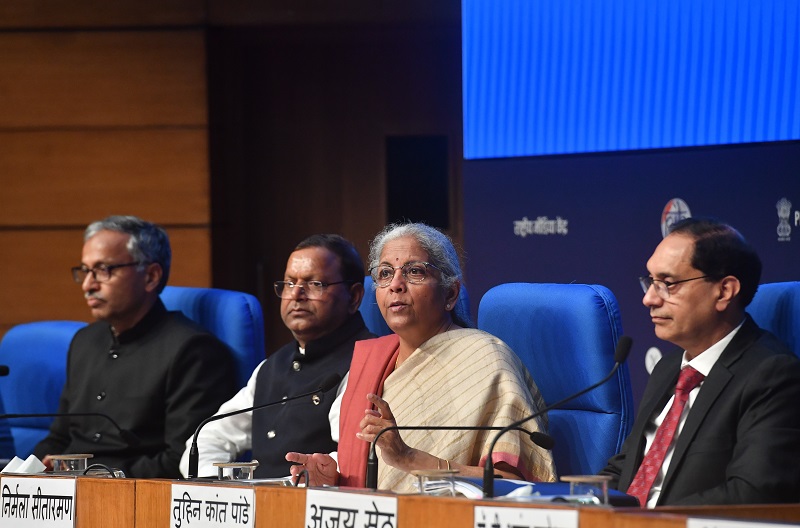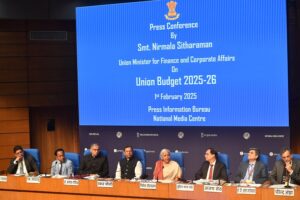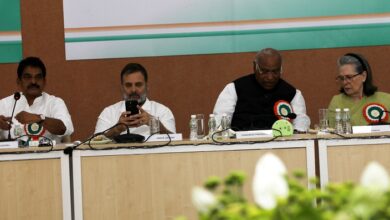
Photo Credit -Sipra Das /’Parliament – New Delhi -1st February 2025
News Mania Desk : In a significant move aimed at bolstering the financial well-being of the middle class and stimulating economic growth, Finance Minister Nirmala Sitharaman announced substantial income tax reforms in the Union Budget 2025-26. These measures are designed to increase disposable income for taxpayers, thereby enhancing consumption and investment across the country.
Key Tax Reforms:
- Increased Tax Exemption Threshold: The income tax exemption limit has been raised from ₹7 lakh to ₹12 lakh under the new tax regime. This adjustment ensures that individuals earning up to ₹12 lakh annually are exempt from paying income tax, providing significant relief to middle-class taxpayers.
- Rationalization of Tax Rates: The government has restructured tax slabs to reduce the tax burden on higher income brackets. The highest tax rate of 30% will now apply to incomes above ₹24 lakh, up from the previous threshold of ₹15 lakh. This change is expected to encourage higher earnings and investments.
- Standard Deduction Enhancement: The standard deduction for salaried individuals has been increased from ₹50,000 to ₹75,000, further augmenting the disposable income of taxpayers.

Additional Taxpayer Benefits:
- TDS and TCS Adjustments: The limit for Tax Deducted at Source (TDS) on interest for senior citizens has been doubled from ₹50,000 to ₹1 lakh. Similarly, the annual limit for TDS on rent has been increased from ₹2.4 lakh to ₹6 lakh, reducing the compliance burden on taxpayers.
- Tax Exemption on NSS Withdrawals: Withdrawals from the National Savings Scheme made on or after August 29, 2024, will be exempt from tax, encouraging savings and providing liquidity to individuals.
- Extended Filing Period for Updated Returns: The time limit to file updated income tax returns has been extended from two years to four years, offering taxpayers greater flexibility in managing their tax affairs.
Economic Implications:
These tax reforms are anticipated to leave more money in the hands of taxpayers, thereby boosting household consumption, savings, and investment. By increasing the disposable income of the middle class, the government aims to stimulate domestic demand, which is crucial for sustaining economic growth amid global uncertainties.
The restructuring of tax rates and enhancement of standard deductions are expected to incentivize higher earnings and investments, contributing to overall economic development. However, these measures will result in a revenue loss of approximately ₹1 trillion annually for the government. To mitigate this, the budget includes plans to modestly increase capital spending, focusing on infrastructure and development projects that can drive long-term growth.

Market Reactions:
The announcement of tax cuts has elicited mixed reactions in the financial markets. Consumer goods companies have experienced gains, reflecting optimism about increased consumer spending due to higher disposable incomes. Conversely, infrastructure firms have faced declines, possibly due to concerns over the modest increase in capital expenditure.
Conclusion:
Finance Minister Nirmala Sitharaman’s budget proposals underscore the government’s commitment to empowering the middle class and revitalizing the economy. By implementing substantial tax reforms, the government aims to enhance the financial well-being of taxpayers, stimulate domestic demand, and foster sustainable economic growth.
News Mania Desk /Photo Credit -Sipra Das (National Consulting Photo Editor)
Parliament – New Delhi -1st February 2025







